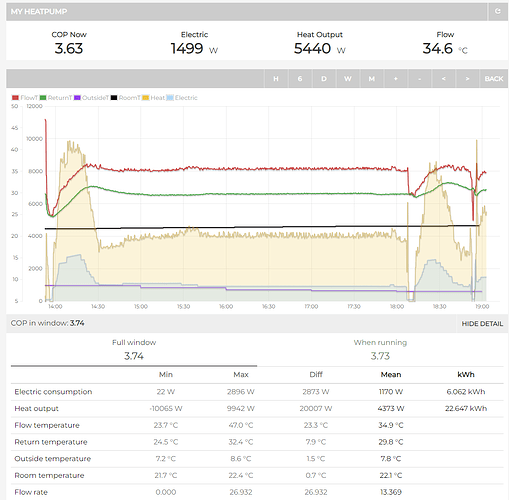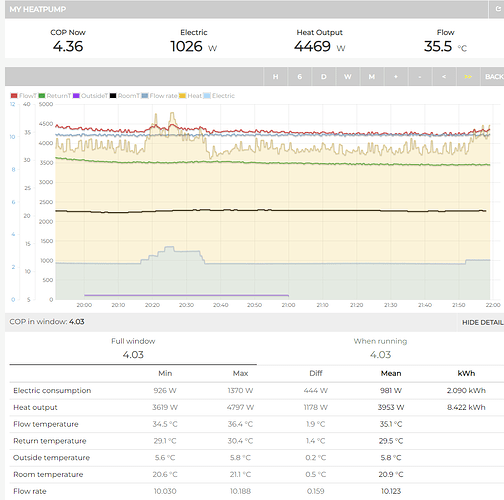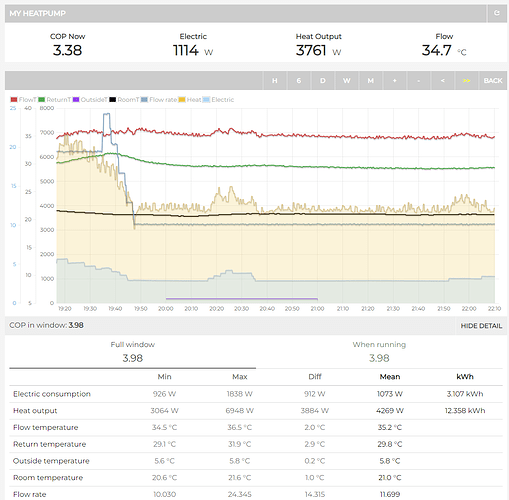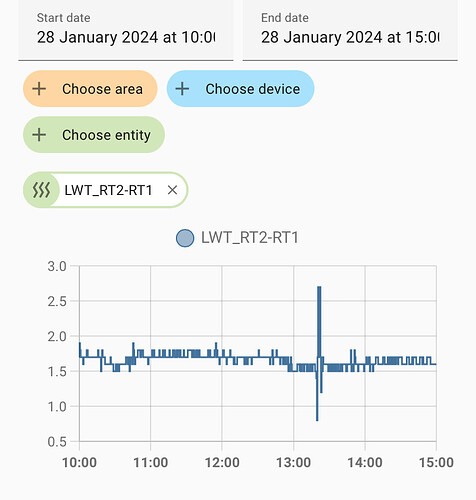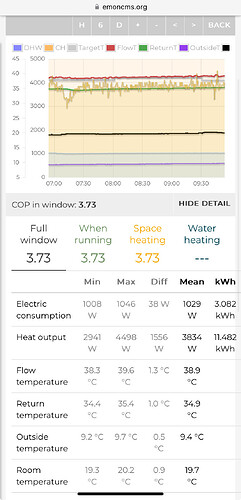Maybe R1T is faulty/badly calibrated and reading too high?
The temperature at R1T is not what goes to your house whether it is correct or not.
R2T is the thermistor closest to the water outlet and is the only one that matters.
The only way to be sure is to measure the temperature at the water outlet when the heat pump is running.
If the thermistors are so bad, there isn’t even a guarantee that the discrepancy seen at 10c or 15c is the same as it is at 35c or 40c, they may have been calibrated to be correct at these sort of temperatures and are not accurate at extremes. None of us know with absolute certainty I suspect.
To properly assess the heat pump performance you need to know the temperature of the water entering and leaving the home, how much of it there is and how much electricity is being consumed.
If these are not measured accurately then it is all little more than informed guesswork.
My values from the MMI are the same as my heat meter.
What R1T is, who cares, it is not what leaves the heat pump. My experience of this heat pump is that it uses no more electricity heating to 37c than it does heating to 33c or lower, if R1T and R2T were closer I suspect it makes little difference, R2T is still the leaving water temperature and you may or may not use less electricity but I suspect very little if any.
When I had 9kW at dT 30c of radiators I needed to heat the water to 42c/43c to get a reasonable COP, any lower was terrible. If anybody has less than 9kW of radiators at dT 30c then you won’t get a COP of much over 3 at lower flow temperatures and probably less.
You have to be able to consume around 4kW of heat to get a COP of 4 because the electrical input bottoms out around 900w.
If you cannot get this your COP will be whatever heat the radiators can deliver at the given flow temperature divided by 900w, it is the best you can do. If you can only get 3kW of heat out of the radiators at 35c flow then the COP will be a little over 3 at best.
If a 9kW owner has 15.5kW of radiators at dT 50c that is 7.9kW at dT30c
If they run their heat pump at a mean flow temperature of 35c with a room temperature of 20c the most the radiators will output is 3.25kW of heat
Assuming this can be done at around 900w electrical input then that is a maximum COP of 3.61
That is the maximum the owner could ever get and in reality it will be lower as it is not possible to always get that flow temperature at only 900w.
I would predict a SCOP of less than 3.
This heat pump needs big radiators to get a respectable COP/SCOP
This is from Jonathan’s data, radiators with around 15.5kW output at dT50c running at a mean flow temperature of about 35c and heat output of about 3.4kW. This is entirely consistent with what we would calculate. There is nothing wrong with this data and as it comes from the heat pump there is nothing wrong with the thermistors at these temperatures. Those radiators could never put out more heat at 35c with the house at 20c
